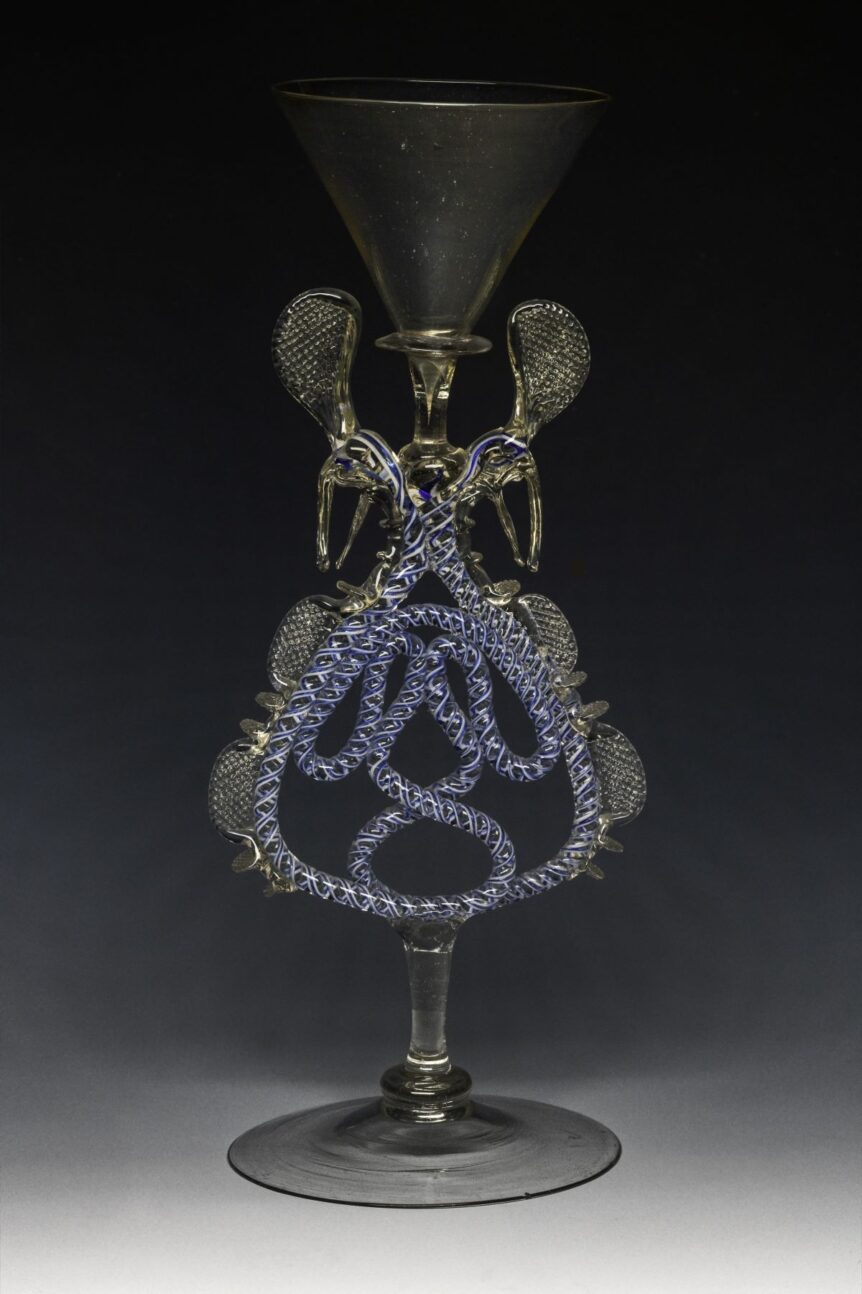As a professional museum curator, one really is not supposed to have favorites among the objects for which one is responsible. That said, there is one rare and early wineglass among more than thirty-three hundred glass objects at Winterthur that stole my heart.
Dating to the latter half of the 1600s, this vessel was made in the Netherlands, or perhaps Germany, and fits into a category known since the mid-1500s as façon de Venise (in the Venetian fashion). Created in a time before lead glass was successfully in production, this non-lead cristallo object is astonishingly light and features tiny bubbles, or “seeds,” throughout the glass. Non-lead glass, when heated, remains workable for a longish time and is particularly suited to the creation of elaborate three-dimensional design elements. In the case of the Winterthur glass, such features include relief-patterned tabs, bird-like heads, and scrolling twists of blue, white, and colorless glass. Because of their spreading ornamental stems, such beverage wares are sometimes known as “serpent” or “wing” glasses.
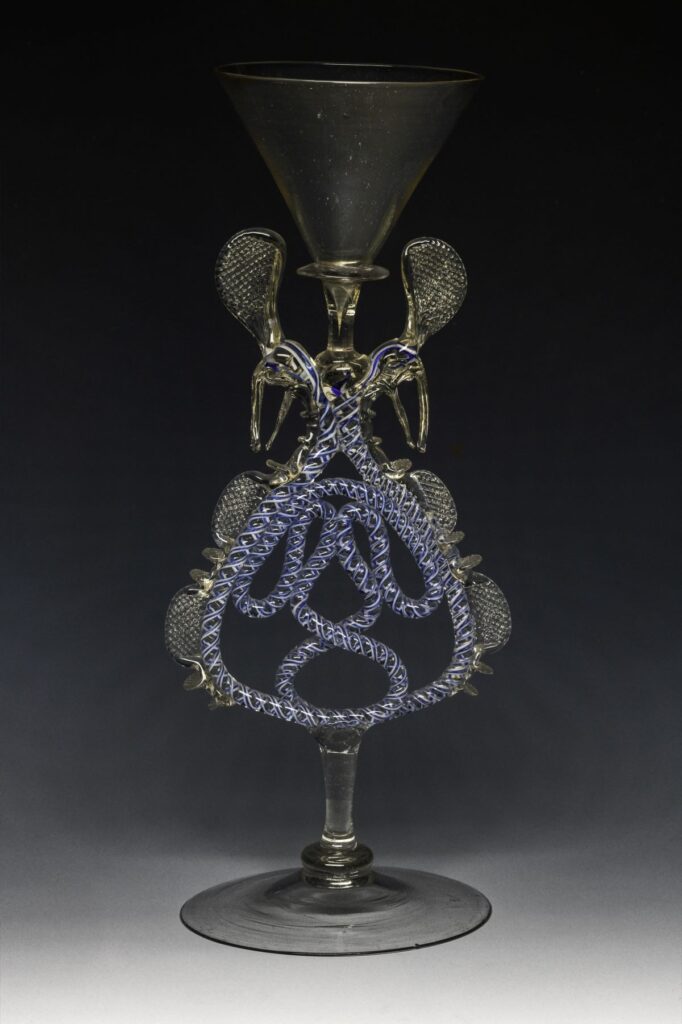
Seventeenth- and eighteenth-century prints and paintings from continental Europe and Britain show that, unlike today, wine drinkers sometimes held their glasses by the rim of the foot. Perhaps this kept certain wines from being warmed by handling the liquid-filled bowl of the glass or the upper part of the stem. In a time when sets of matching glasses were an extreme rarity and the discovery of germs was yet to come, such vessels often were passed from guest to guest.
Although many of the fine and decorative art objects acquired by Winterthur were made in America, the museum also collects foreign-made objects of types that were used here. Astonishingly, based on stem fragments excavated from early contexts at St. Mary’s City in Maryland as well as Jamestown in Virginia, wing glasses were in use in seventeenth-century America.
Note how the drinking vessels are held in these seventeenth-and eighteenth-century artworks.
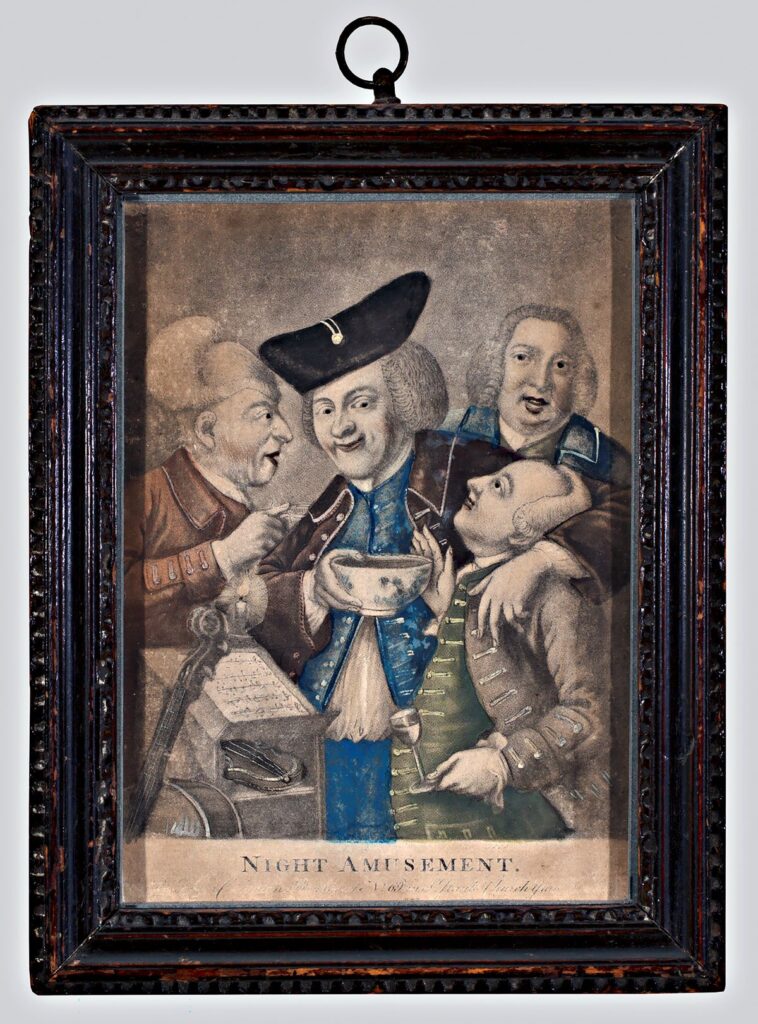
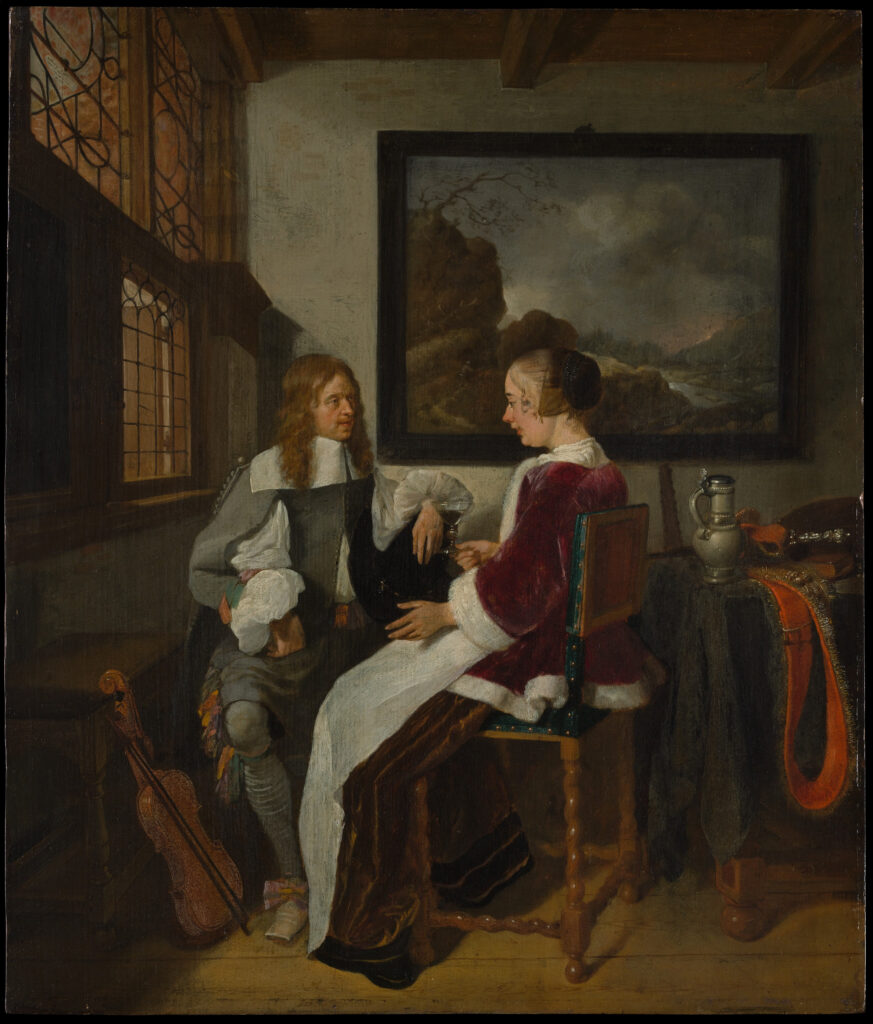
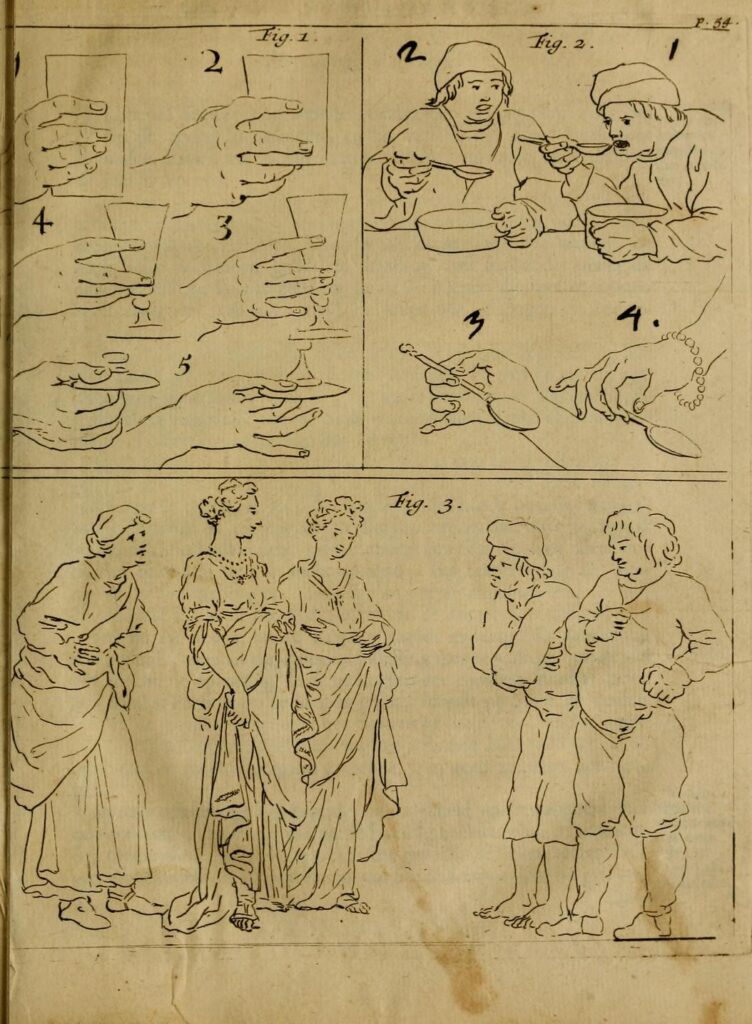
Search online for an entertaining YouTube video from the Corning Museum of Glass showing craftsman William Gudenrath as he creates a different form of wing glass. Additionally, the entire Winterthur Museum collection, including its glass, is available to see online.
LESLIE B. GRIGSBY is the senior curator of ceramics and glass at the Winterthur Museum, Garden, and Library in Delaware.

